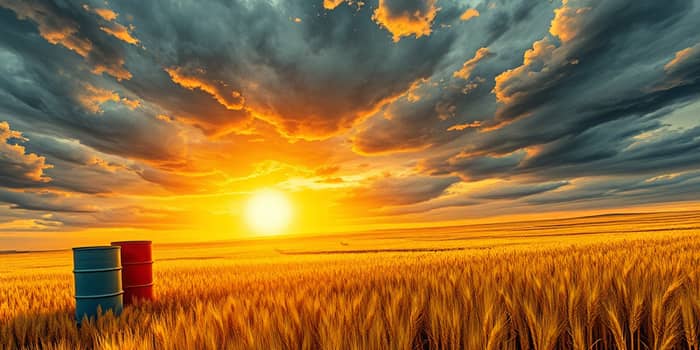
As global conflicts and policy shifts unfold, commodity markets stand at a crossroads. Understanding these dynamics empowers businesses, investors, and communities to thrive amid uncertainty.
After a surge triggered by the post-COVID recovery and Russia’s invasion of Ukraine in 2022, global commodity prices are set to fall by 12% in 2025 and another 5% in 2026, reaching their lowest levels since 2020. The World Bank forecasts a steep 17% drop in its energy price index next year, with metals and agricultural goods following suit.
Energy markets face the greatest declines, yet still sit on a knife’s edge. Disruptions in the Middle East or fresh trade barriers could drive sudden spikes, as risk premiums remain elevated. Metals and minerals will likely stabilize or drift downward, constrained by slowing global growth and persistent policy uncertainty. Agricultural commodities, buffeted by geopolitical and weather-related shocks, could see modest 1% and 3% declines in 2025 and 2026 respectively.
History teaches us that large-scale, sustained supply disruptions are required for major commodity surges. The 1974 Arab oil embargo quadrupled prices, while the 1979 Iranian revolution doubled them. More recent events—the 1990 Gulf War, 2003 Iraq conflict, and the 2022 Russia-Ukraine war—produced sharp but transient price shocks.
While geopolitics remain the primary trigger, modern market resilience—fueled by diversified supply chains and strategic reserves—tends to limit the duration of price spikes. Yet we cannot afford complacency: new tensions in the Middle East, rising U.S.-China trade barriers, and weather extremes keep volatility front and center.
By combining financial tools with operational flexibility, organizations can weather price swings and seize market opportunities as they arise.
Long-term resilience demands a shift toward cleaner, more reliable resources. Investing in renewable energy microgrids and alternative energy sources reduces dependency on volatile oil and gas markets. In the metals sector, advanced recycling techniques and material-efficient designs can diminish exposure to raw mineral price swings.
Agricultural businesses can adopt precision farming, drought-resistant crops, and vertical growing systems to mitigate weather-related shocks. These innovations not only buffer prices but also support environmental goals and community well-being.
Proactive supply chain design fosters agility. When geopolitical events threaten one region, companies can pivot to alternate suppliers without missing a beat.
Collective action helps shape balanced regulations, reduces market fragmentation, and builds trust among stakeholders.
Despite the challenges posed by geopolitical pressures, we stand poised to navigate the next wave of commodity market shifts. By internalizing historical lessons, deploying modern risk-management strategies, and investing in innovative, sustainable solutions, businesses and communities can emerge stronger.
Falling commodity prices in the near term should ease inflationary pressures, yet the specter of abrupt disruptions remains. Staying vigilant—through diversified portfolios, agile operations, and collaborative engagement—ensures preparedness for any scenario.
Ultimately, our response to geopolitical volatility can transform uncertainty into opportunity. By adopting a forward-looking mindset and championing data-driven decision making, we contribute to shaping a more stable future for global markets and local communities alike.
References













